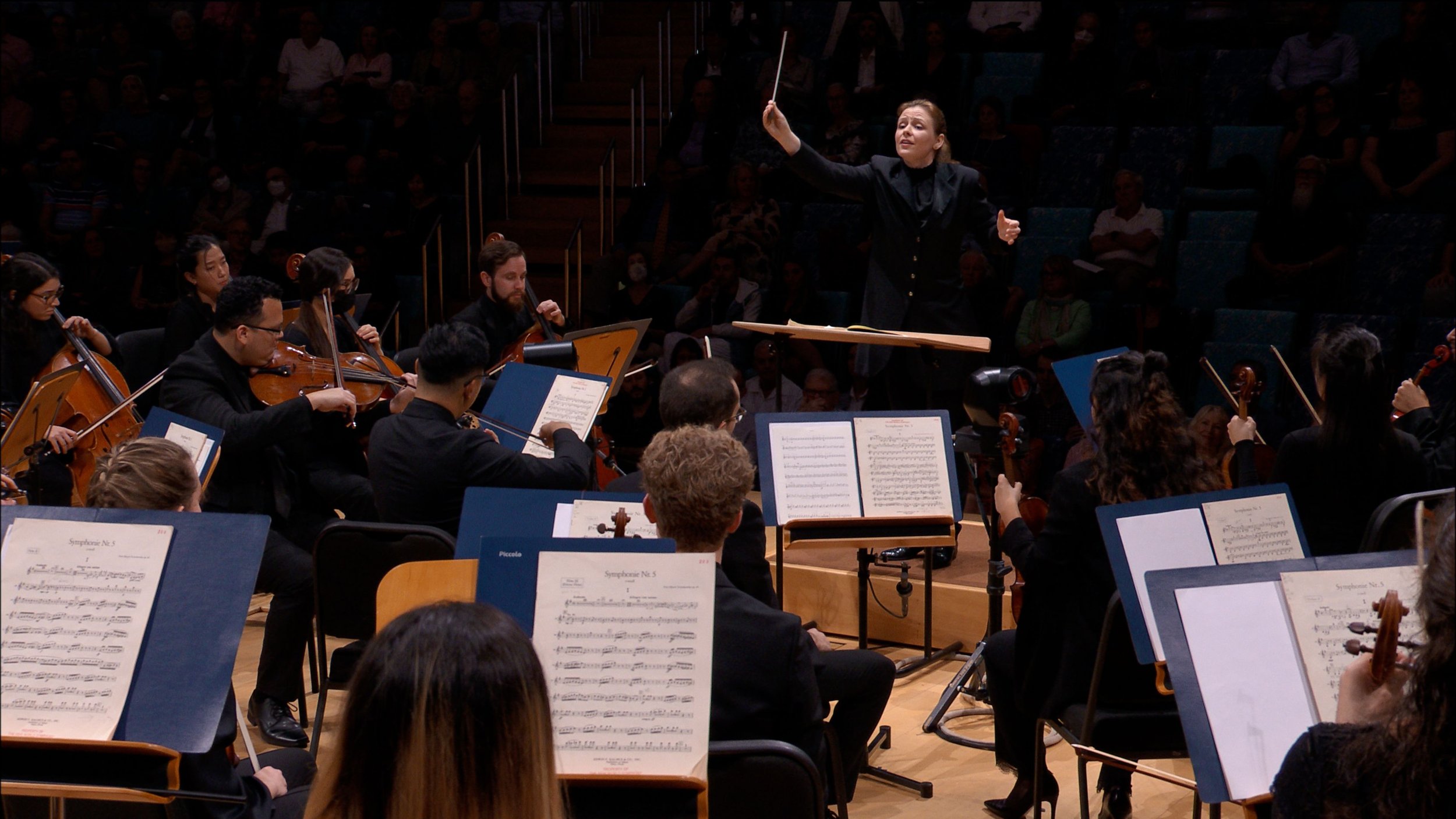Praise for Gemma New with the New World Symphony
Gemma New led the New World Symphony on Saturday night in Miami Beach (Photo credit: Roy Cox)
Gemma New strengthens her bond with New World Symphony
By Lawrence Budmen
South Florida Classical Review
January 22, 2023
When Gemma New stepped in for the ailing Michael Tilson Thomas last February she delivered one of the finest concerts of the New World Symphony season. The New Zealand-born conductor returned to the orchestral academy in Miami Beach on Saturday night to lead works by Barber and Tchaikovsky, and the fireworks struck again. From the moment that New, 36, took the stage at the New World Center, her total rapport with the musicians, attention to detail and intensity of musical expression proved totally commanding.
Samuel Barber’s three concertos — for violin, cello and piano, in order — are some of his finest creations. The Cello Concerto, composed in 1945, fully displays Barber’s penchant for dark lyricism. Guest cellist Alisa Weilerstein proved equal to the concerto’s fiendish demands: Her fleet bowing and luxuriant tone immediately commanded attention, and she shaped phrases in long arcs while always maintaining a singing line.
Weilerstein evidenced total security in the difficult writing of the first movement cadenza, spotlighting the instrument’s middle and upper registers. She brought emotional depth to the elongated discourse of the second-movement Andante sostenuto. The rapid-fire coda of the final Molto allegro e appassionato capped a brilliant demonstration of instrumental virtuosity and keen musicianship.
More than a mere accompanist to Weilerstein and the orchestra, New was a full partner, drawing playing of rhythmic exactitude and cohesive blending from the ensemble. She was on top of every change of meter and hairpin turn of phrase. Under New’s baton, Barber’s inspired melodic writing and angular jolts were fully realized.
With the New World fellows in top form across all sections, Tchaikovsky’s Symphony No. 5 in E minor emerged freshly minted in New’s scrupulously transparent, intense reading. The opening fate motif, played by two clarinets, was taken at a measured pace and the contrasting episodes of the Allegro con anima were each given distinctive character without loss of momentum.
Thea Humphries’ solo horn resounded full, rich and sonorous in the famous theme of the Andante cantabile. New paced the romantic melodies with balletic fluency and incisiveness. The sudden, brass-dominated interruptions of the fate theme were delivered with maximum, storm-the-heavens impact.
New shaped the Valse: Allegro moderato with a natural pulse and flow, the return of the fate motif in waltz time by the bassoon given a sardonic turn. Without pause, New charged into the finale with an affirmative statement of the recurring melody, now in a major key. New’s fast tempo in the main Allegro vivace section of the movement radiated inexorable forward thrust. She drew a full plethora of instrumental hues, textures and shadings from the well-coordinated orchestra, sustaining tension right up to the triumphant final pages. With music making of this consistently high level, New’s future New World visits are highly awaited.
The program opened with New World conducting fellow Chad Goodman leading Valerie Coleman’s Umoja. Umoja is the Swahili word for “unity” and the score celebrates the first of the seven holidays of Kwanzaa.
Coleman expanded her original choral piece and wind quintet into an orchestral work in 2019 for the Philadelphia Orchestra. The resulting score is classic, folk-based Americana in the best sense. After initial harp glissandos and murmurings of two flutes, solo violin and terraced strings introduced the principal thematic material. Engaging the full forces, the music becomes ever more vigorous and festive. Coleman has conceived a fine, 14-minute orchestral showpiece. Goodman’s efficient, energetic conducting brought out the score’s strengths, abetted by stellar playing.
Read the full article here.

